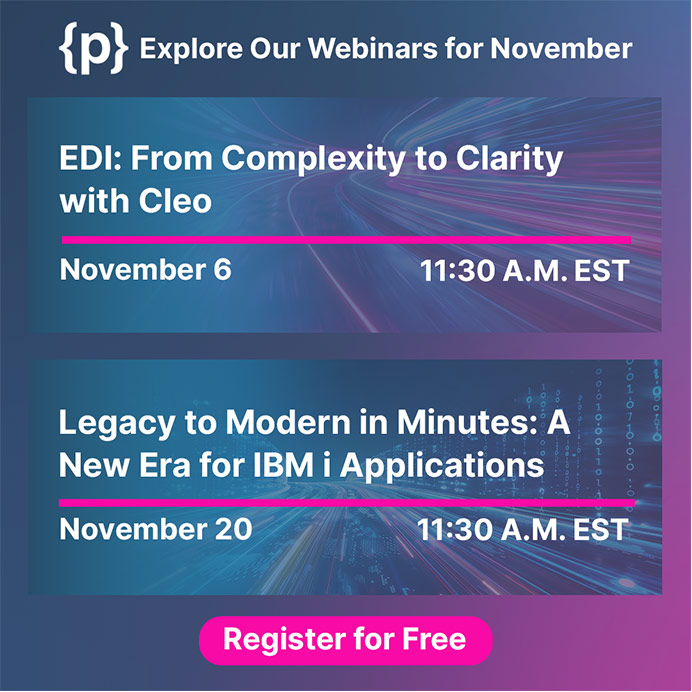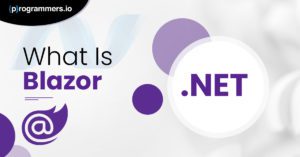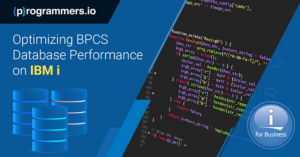Ever Wondered……,
What if you could track every change in your codebase, collaborate effortlessly, and ensure the integrity of your project?
Then…,
Look no further and unlock the power of Git for efficient source code management.
Background
IBM i, formerly known as AS/400, iSeries, and System i, is an exceptionally reliable and secure enterprise server platform developed by IBM. Due to its robust performance and integrated database and middleware capabilities, it is widely used in various industries including finance, retail, and manufacturing. IBM i is known for its seamless integration with business applications, making it a critical component in enterprise environments.
Objective
This case study aims to highlight the benefits and feasibility of using Git on the IBM i platform without relying on paid third-party tools. This study aims to demonstrate how Git, a widely used open-source version control system, can streamline development workflows, enhance collaboration, and reduce costs for organizations.
Technical Overview
What is Git?
Git is a distributed version control system designed to manage small to exceptionally large projects quickly and efficiently. Developed in 2005 by Linus Torvalds, Git has become popular among software developers for its powerful features.
- Branching and Merging: Developers can create branches to work on separate features or fixes and merge them back into the main codebase.
- History and Tracking: Git maintains a detailed history of changes, enabling developers to track modifications and revert to previous versions.
- Collaboration: Multiple developers can work on the same project simultaneously, facilitating collaborative development.
Git’s popularity is due to its speed, flexibility, and extensive support from a large, active community of developers.
Git on IBM i
Installing and using Git on IBM i involves several steps but is feasible without major disruptions to existing workflows. Key steps include:
1. Installing Git:
Git can be installed on IBM i using open-source package managers like Yum or via RPM packages from community contributors.
2. Configuration:
Once Git is installed, it needs to be configured with user information, repository settings, and preferences.
3. Repository Management:
Developers can create and manage Git repositories on the IBM i system, enabling effective version control and collaboration.
Considerations for IBM i environments include ensuring compatibility with existing applications, familiarizing yourself with the command-line interface, and integrating with other development tools used on IBM i.
Improved Development Workflow
The following are some of the ways Git streamlines development workflows:
- Concurrent Development: Multiple developers can work on different project parts simultaneously, boosting productivity and speeding up development cycles.
- Easy Merging: Git’s powerful merging tools facilitate the integration of changes from different branches, reducing complexity.
- Automated Processes: Git can integrate with CI/CD pipelines to automate testing, deployment, and other processes, enhancing efficiency.
Improved Version Control
Git’s version control capabilities offer significant advantages:
1. Detailed History:
Git maintains a detailed history of changes, including who made them, and when – aiding in tracking progress and identifying issues.
2. Reversion Capabilities:
Developers can easily revert to previous versions if issues arise, minimizing downtime and reducing error impacts.
3. Change Management:
Git’s ability to track changes at a granular level helps manage code modifications more effectively.
Enhanced Collaboration
Collaboration among development teams is enhanced by Git in the following ways:
- Clear Change History: Git provides a transparent history of changes, allowing teams to collaborate and understand the evolution of code.
- Code Reviews: Git supports the code review processes, enabling developers to review each other’s work and maintain high code quality.
- Communication: Git improves team communication by providing context around changes, reducing misunderstandings, and improving coordination.
Faster Delivery Cycles
Git enables faster and more reliable delivery cycles by:
- Streamlined Deployment: Git’s integration with deployment tools allows for quicker and more reliable releases.
- Rollback Capabilities: In case of any issues, Git allows quick rollbacks to stable versions, minimizing downtime and ensuring continuity.
- Continuous Integration: Git supports continuous integration practices, enabling automated testing and deployment, which speeds up the delivery process.
Focus on Open-Source Advantages
1. Cost Savings
Free and open-source version control tools, like Git, eliminate the need for costly third-party version control systems, saving organizations money, especially those requiring multiple licenses.
2. Open Standards
Git is based on open standards, ensuring compatibility with a wide range of tools and platforms. This reduces vendor lock-in and provides flexibility in choosing tools that best fit organizational needs.
3. Large Community Support
Git has a vast, active community of users and developers. With extensive documentation, tutorials, and forums for troubleshooting and knowledge sharing, this community makes it easier for teams to adopt and use Git efficiently.
4. Training
To help potential clients understand the benefits and implementation process of Git on IBM i, we offer consultations and workshops. To ensure a smooth transition and maximize the benefits of using Git in your development environment, we can provide tailored advice, training, and support.
Overcoming Common Challenges
Initial Resistance
Adopting a new tool like Git on IBM i can be met with resistance, especially from team members who are accustomed to traditional methods. To ensure a smooth transition, it is crucial to address this effectively. Here are detailed strategies to overcome initial resistance:
- Education:
Start by providing comprehensive information about the benefits and features of Git. Organize informational sessions where the advantages of Git are explained in detail, emphasizing how it can streamline workflows, improve version control, and enhance collaboration.
Use real-world examples and case studies to illustrate these benefits. Ensure that all team members understand how Git will make their daily tasks easier and more efficient.
- Demonstrations:
Conduct live demonstrations to show Git in action. These demonstrations should include common tasks such as branching, merging, committing changes, and rolling back to previous versions.
Seeing the tool in action can help alleviate fears and misconceptions. Use these sessions to answer questions and address concerns in real time , making the demonstrations interactive.
- Involvement:
Involve team members in the decision-making process from the start. Create a cross-functional team that includes representatives from different departments who will use Git.
The team can provide input on how Git will be implemented and tailored to meet the organization’s specific needs. By giving employees a voice in the process, you can foster a sense of ownership and reduce resistance.
Training and Adoption
Ensuring the smooth adoption of Git among IBM i teams requires a structured approach to training and the establishment of best practices. Here are detailed steps to achieve this:
- Training Programs:
Develop comprehensive training programs tailored to different skill levels. For beginners, offer introductory courses that cover the basics of Git, including its purpose, key features, and fundamental commands.
For more experienced users, provide advanced training on topics like branching strategies, conflict resolution, and integrating Git with other tools. Utilize a mix of training formats, such as online courses, in-person workshops, and self-paced tutorials to accommodate different learning preferences.
- Best Practices:
Establish clear best practices for using Git within the organization. Create a Git usage guide that outlines standard procedures for committing changes, writing commit messages, branching, merging strategies, and conducting code reviews.
Encourage consistent use of these practices to maintain code quality and streamline collaboration. Regularly review and update these best practices to reflect new insights and improvements.
- Support Resources:
Provide access to a variety of support resources to help teams overcome any challenges they may encounter.
It also includes comprehensive documentation, such as user manuals and FAQs, as well as online courses that employees can access on their schedules, and community forums for employees to interact and share ideas. Additionally, consider setting up an internal support team or help desk that can provide immediate assistance with Git-related issues.
Practical Steps for Overcoming Challenges
To ensure these strategies are effectively implemented, follow these practical steps:
- Leadership Endorsement: Secure buy-in from senior leadership to emphasize the importance of transitioning to Git. Leaders should communicate the strategic benefits of Git and endorse the training and adoption programs.
- Pilot Program: Start with a pilot program involving a small group of developers. The group can be used to evaluate the implementation, provide feedback, and refine the process before a full-scale launch occurs.
- Feedback Loop: Establish a feedback loop to continuously gather input from users about their experience with Git. Surveys, focus groups, and regular check-ins can be used to identify pain points and areas for improvement.
- Recognition and Rewards: Recognize and reward team members who actively participate in the adoption process and demonstrate proficiency in using Git. This can motivate others to engage more fully with the new tool.
- Continuous Improvement: Treat the adoption of Git as an ongoing process rather than a one-time event. To ensure training materials, best practices, and support resources are relevant and effective, they should be reviewed regularly.
Conclusion
By following these detailed steps and strategies, organizations can overcome initial resistance, ensure effective training and adoption, and successfully integrate Git into their IBM i environments. This will lead to enhanced development processes, better collaboration, and significant operational efficiencies. The integration of Git with various development environments and CI/CD pipelines streamlines the entire development process, including coding and deployment. Furthermore, it fosters a culture of transparency and accountability among development teams, in addition to ensuring code quality and consistency.




